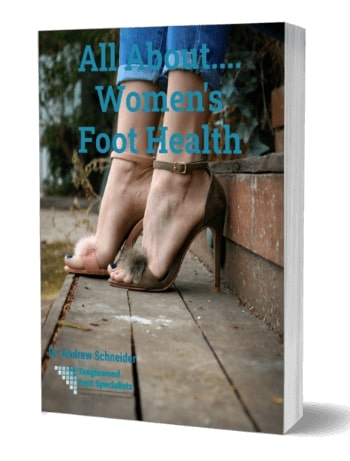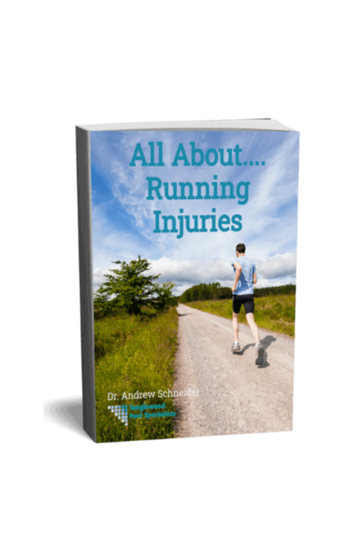If you think you’re getting hurt more than the men in your running group...well, it turns out that you’re absolutely right. We know this might seem like a bad sexist joke, but the facts are real. After studying male and female athletes, studies prove that women get more overuse injuries than men.
Now, overuse injuries are very common in runners. That's because they're caused by repetitive motions. (Which means doing the same motion again and again.) Why is that a problem? It hits the same part of your body with constant force. Common culprits include shin splints (more on these in a minute) and stress fractures. And both these injuries are way too familiar for women who run.
Women Runners: Why Injuries Are More Commen
Researchers at Ohio State University studied 3000 injury cases among high school athletes. They looked at results from a seven-year period. And, they examined individuals who played 20 different sports.
First, they discovered that women are more likely than men to get injured in general. Then, they found that track runners had the highest incidence of injury. In other words, female runners got hurt more often than their male counterparts.
More recently, in research published on Podiatry Today, Dr. Karen Langone highlighted other reasons that women runners may get hurt more often. She explains that women's body structure and biomechanics is behind this risk. The evidence shows that, women runners have "greater internal hip rotation, greater weight-bearing knee valgum, increased hip excursion, greater hip adduction and velocity, less transverse plane control, slower recruitment of the vastus medialis, tighter hamstrings, less resistance to valgus knee stress, increased functional foot deformation in the longitudinal arch, and a thinner plantar fascia both at origin and insertion," increasing their injury risk.
Thankfully, being a female runner doesn’t have to mean that you’re doomed to a life of running pain. In fact, there are many things you can do to avoid overuse injuries. For starters, you should incorporate rest days into your training routine. And cross-training should be a major feature of your workout regimen.
You can also change your stride or run on different types of surfaces. Plus, you need to stretch and work on balance to avoid muscle compensation on one side of the body. These general tips should help lower your odds of every type of running injury. But now let’s take a closer look at the most common running injuries: shin splints and stress fractures!
What are Shin Splints?
Shin splints are also called Medial Tibial Stress Syndrome (MTSS). This injury often develops when you step up your training. That could mean increasing your mileage, upping speed, or running more often each week. Basically, it’s an overuse injury, as I mentioned earlier.
But back to the doctor speak for a minute. The stress of shin splints hits your tibia. (That's the long bone that runs down the front of your leg, from just below your knee all the way to your ankle.) When your runs put stress on your tibia, it needs help from surrounding body parts. And that leads to strain on the tissue in your bones, tendons and muscles. Which hurts. A lot. Especially if you try to push through and keep on training.
As we mentioned, women are more susceptible to shin splints than men. Other risk factors for shin splints includes your arch height (too flat or too high are both a problem.) Also, training on hard, surfaces (like concrete) can increase your risk for this injury.
Symptoms and Treatments
Symptoms of shin splints show up in your lower legs as pain or tenderness. Typically, the discomfort is most prominent on your inner leg. Initially, running may help relieve your pain. But, over time, running with shin splints will worsen the condition. Eventually, your pain gets stronger and more persistent.
Thankfully, there’s a lot we can do to help women runners beat the odds and recover from shin splints. The first step is to take a break from running (I know you don’t want to hear that, but it’s non-negotiable.) During this down time, try icing the affected area several times a day. You can also take NSAIDs (non-steroidal anti-inflammatories). These will manage your pain and reduce inflammation.
Still, if a few days of home care doesn’t offer pain relief, it’s time to come into our Houstin podiatry clinic. We can take X-rays and conduct a thorough examination to rule out a related running injury: a stress fracture.
What is a Stress Fracture?
Your foot is very vulnerable to stress fractures because of how many bones it has (26!) Also, your foot takes a lot of stress from running. So, over time, that impact weakens your bone. And sometimes, that leads to small cracks or breaks.
Stress fractures are common with runners. Which means they're even more common for women runners. But other factors, like skipping rest days between workouts, or taking steroids, increases your risk even further.
Preventing Shin Splints and Stress Fractures in Women Runners
There are some clear ways you can reduce your risk for shin splints and stress fractures. First, get a gait analysis to see if your running form is contributing to your injury. This is a service we provide in-office as part of getting you fitted for custom orthotics. It helps Dr. Schneider (and you) understand how your body moves. That way, we'll know how to support those movements, so you can enjoy running without pain.
You’ve also got to pick a great pair of supportive running shoes. Some people like the Nike Vapormax, some prefer the adidas Ultra Boost. Truly, we don’t care which sneaker brand you choose. We only want you to pick a shoe that feels good the first time you slip it on. And to consider getting a pair of running orthotics. They can help take the pressure off your tibia and foot bones during exercise.
We're also going to recommend cross-training, to help build up strength in other areas of your body. Give extra attention to your core, hips and ankles, as these muscles can all help support your runs.
Finally, we'll suggest taking a good, hard look at your training schedule. I’m not here to sit you on the couch. We'll work together to create a plan that will keep you running. And keep you from seeking pain relief in my office. Because, as much as we love seeing you, we’d rather not have you visit for repetitive running injuries.
Remember: the key to avoiding overuse injuries is listening to your body. If you notice pain in one part of your body when you run, don’t try to push through the discomfort. Instead, make an immediate appointment with your Houston podiatrist. That way, we can beat the odds and stave off an overuse injury!

















